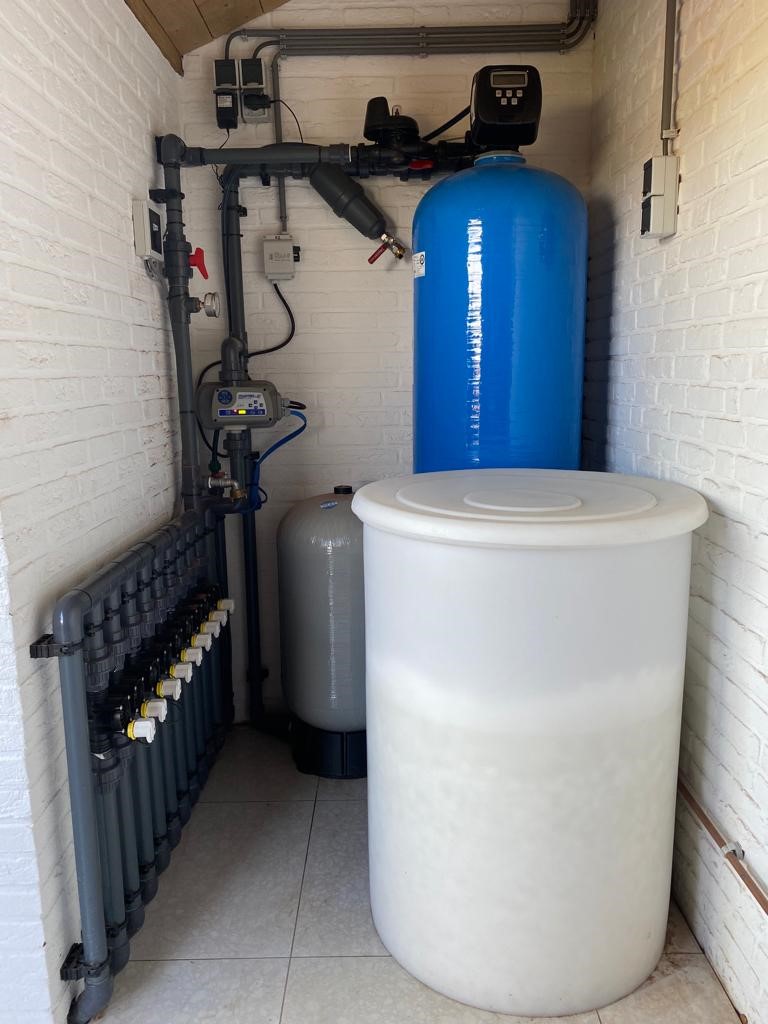Ion exchanger
With an ion exchanger, unwanted ions are removed from the water and exchanged for other ions. This is done by means of resin beads charged with sodium ions. With an ion exchanger, you easily soften (tap) water and remove lime, iron and manganese from (spring) water.

From groundwater to usable drinking water
Purifying water provides many benefits. Using an ion exchanger prevents the formation of iron, lime and manganese deposits.
An ion exchanger is a cylinder in which there are all sorts of small synthetic resin beads. The hard tap water enters at the top of the cylinder and flows down past the synthetic resin beads. During this passage, the water is purified.
This process continues until the entire resin cell is full of all calcium and magnesium particles. When we have reached that point then we can simply reverse the process. This is the ultimate advantage of an ion exchanger. Rinsing a saline solution over the resin beads releases the magnesium and calcium particles and recharges the resin bed with sodium particles. The remainder of the salty water in which the magnesium and calcium is dissolved is flushed down the drain and does not enter the water circuit.
Contact us
Form 6 Contact - Do you have a question?
"*" indicates required fields
